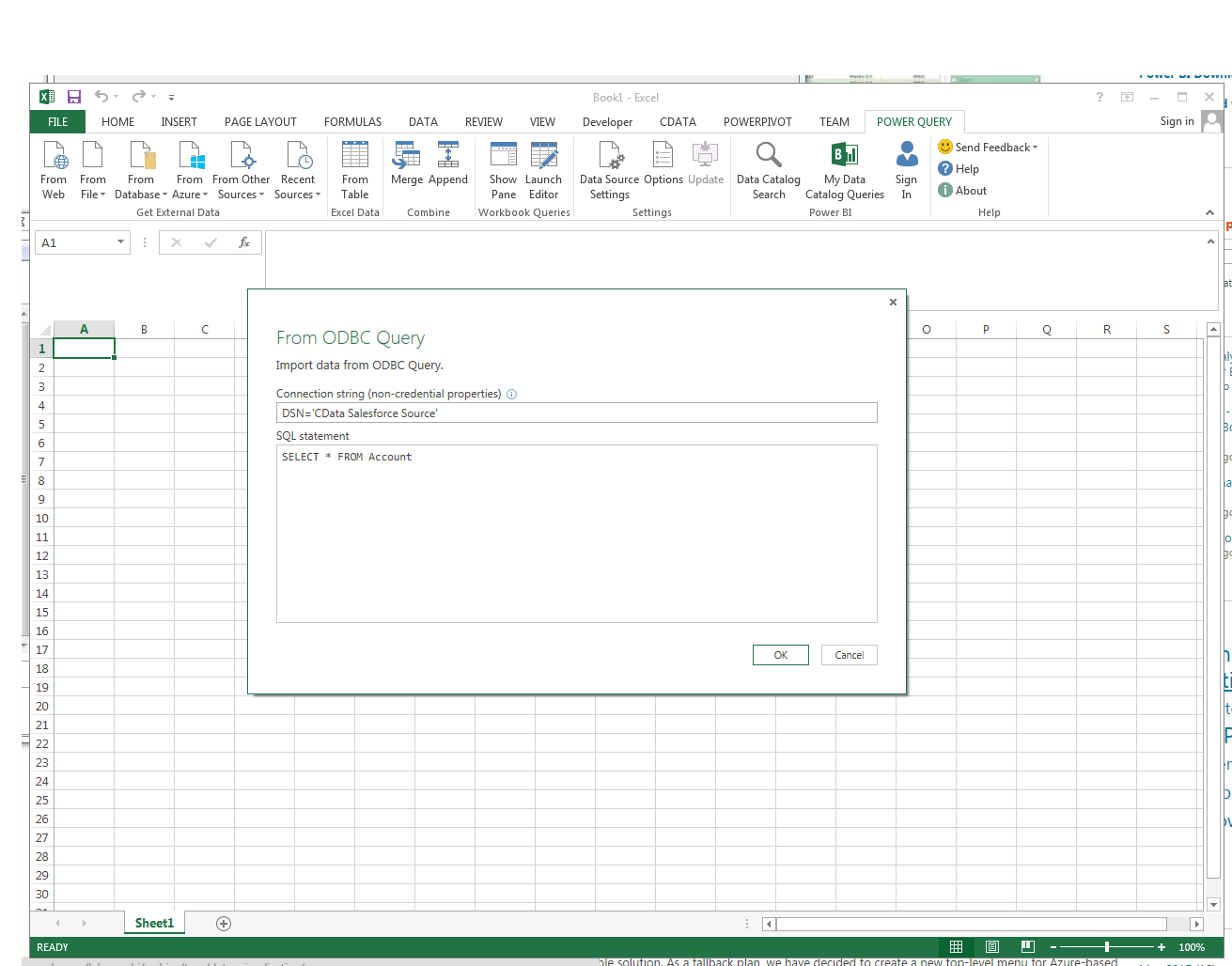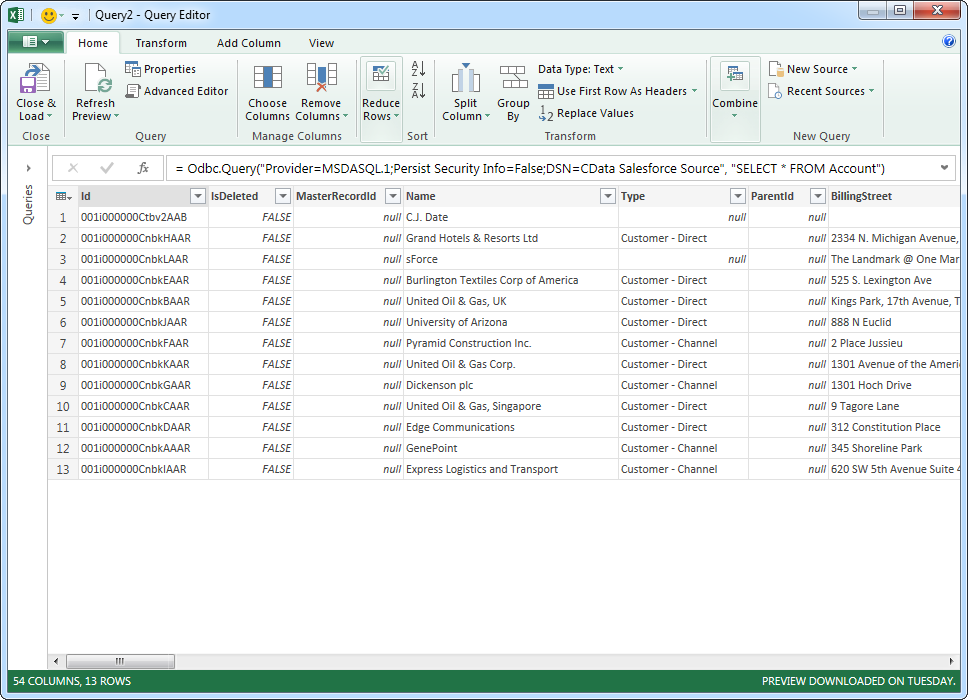Discover how a bimodal integration strategy can address the major data management challenges facing your organization today.
Get the Report →Use the CData ODBC Driver for Azure Data Catalog in Microsoft Power Query
You can use the CData Azure Data Catalog ODBC Driver with Microsoft Power Query. In this article, you will use the ODBC driver to import Azure Data Catalog data into Microsoft Power Query.
The CData ODBC Driver for Azure Data Catalog enables you to link to Azure Data Catalog data in Microsoft Power Query, ensuring that you see any updates. This article details how to use the ODBC driver to import Azure Data Catalog data into Microsoft Power Query.
Connect to Azure Data Catalog as an ODBC Data Source
If you have not already, first specify connection properties in an ODBC DSN (data source name). This is the last step of the driver installation. You can use the Microsoft ODBC Data Source Administrator to create and configure ODBC DSNs.
You can optionally set the following to read the different catalog data returned from Azure Data Catalog.
Connect Using OAuth Authentication
You must use OAuth to authenticate with Azure Data Catalog. OAuth requires the authenticating user to interact with Azure Data Catalog using the browser. For more information, refer to the OAuth section in the help documentation.
Import Azure Data Catalog Data
Follow the steps below to import Azure Data Catalog data using standard SQL:
-
From the ribbon in Excel, click Power Query -> From Other Data Sources -> From ODBC.
- Enter the ODBC connection string. Below is a connection string using the default DSN created when you install the driver:
Provider=MSDASQL.1;Persist Security Info=False;DSN=CData AzureDataCatalog Source -
Enter the SELECT statement to import data with. For example:
SELECT DslAddressDatabase, Type FROM Tables WHERE Name = 'FactProductInventory'![The ODBC connection string and SELECT query. (Salesforce is shown.)]()
Enter credentials, if required, and click Connect. The results of the query are displayed in the Query Editor Preview. You can combine queries from other data sources or refine the data with Power Query formulas. To load the query to the worksheet, click the Close and Load button.
![Tables loaded in Power Query. (Salesforce is shown.)]()








